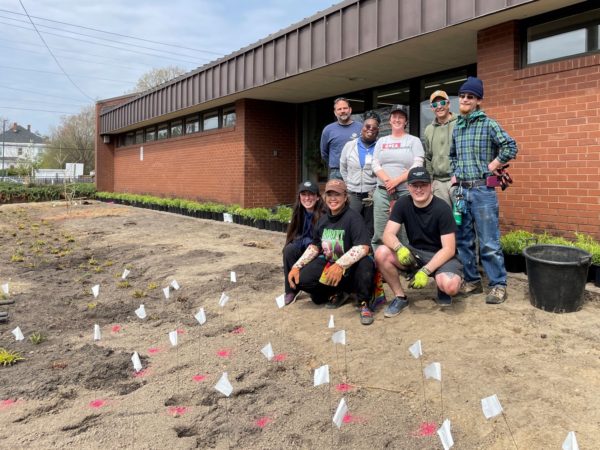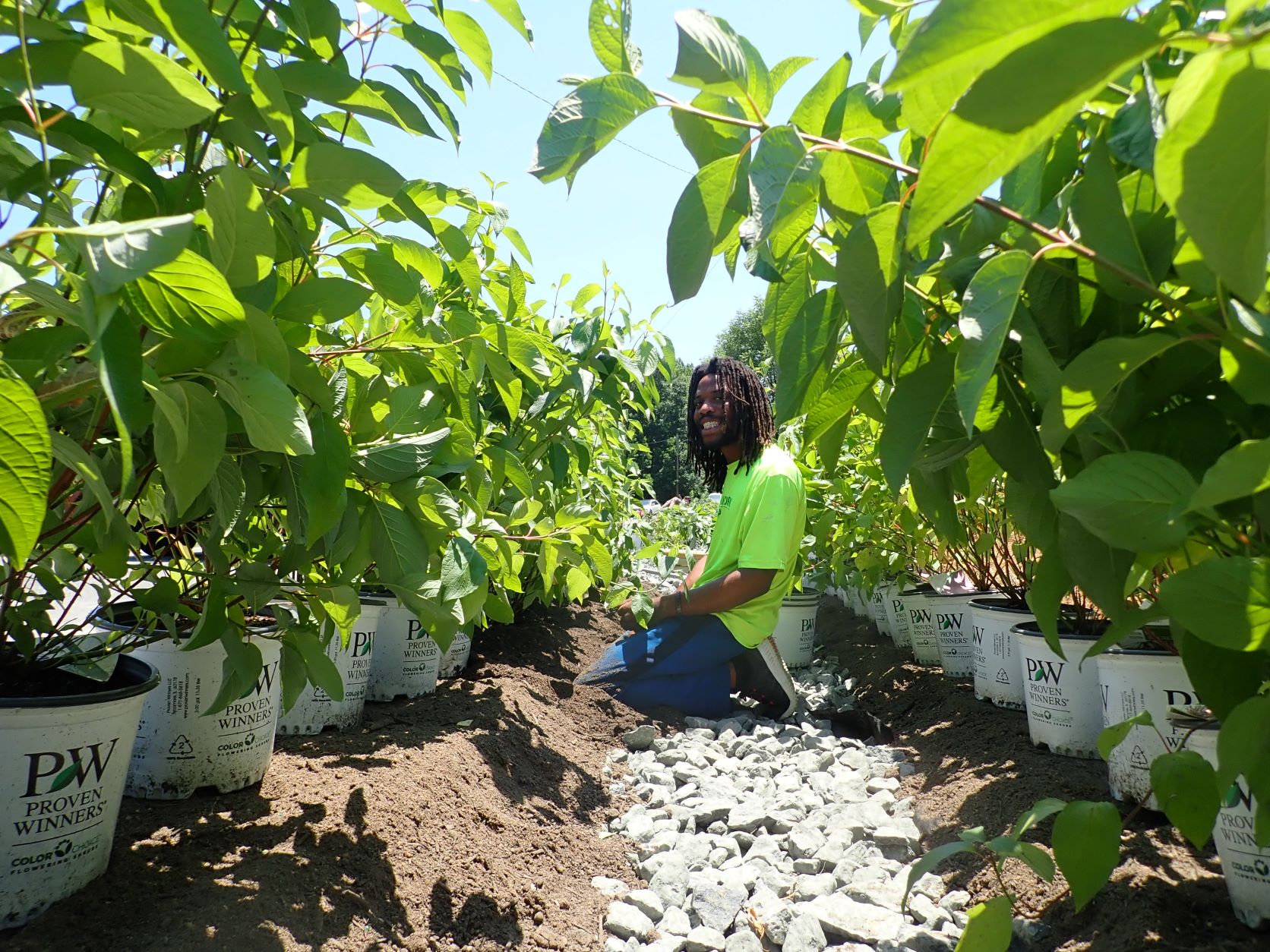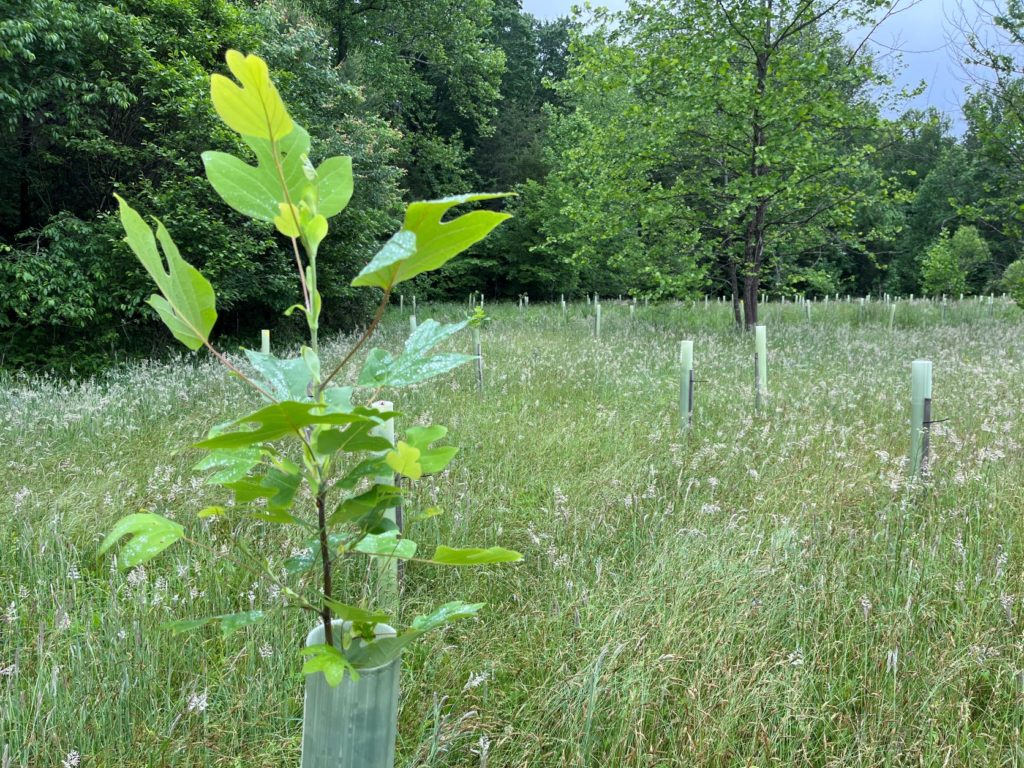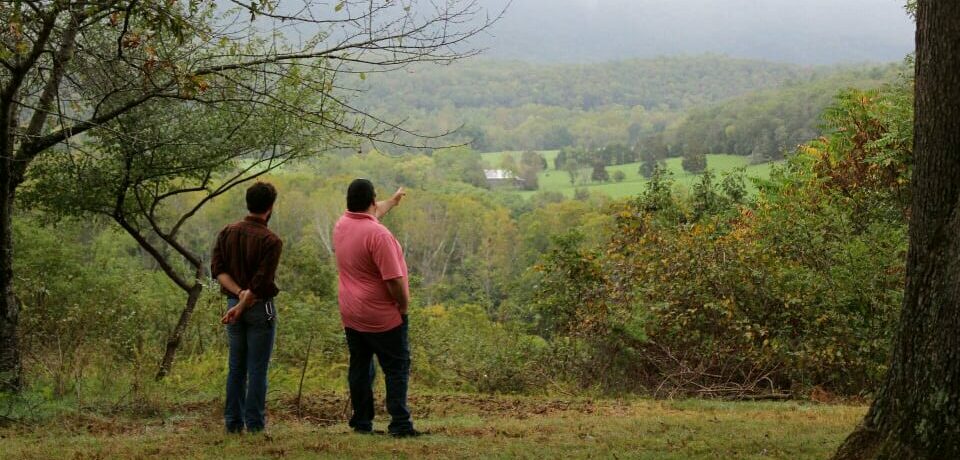Chesapeake Bay Restoration Produces Results!

Volunteers planted 44 trees and a pollinator garden at the North Avenue Branch Library in Richmond. Image credit: James River Association
We’re celebrating Chesapeake Bay Awareness Week from June 4–12th. Throughout the year, VCN and our partners work to meet Virginia’s 2025 deadline to restore the Chesapeake Bay. But this week, we’re taking a moment to reflect on restoration projects successfully protecting the Bay watershed ecosystem. See Bay restoration projects below to see how our Network is helping to clean the Bay!
Richmond Public Libraries Go Green
At three Richmond libraries, the James River Association (JRA) is installing projects such as rain gardens and street trees. These green infrastructure projects contribute to healthier communities. They capture and filter stormwater before it enters our waterways, and ultimately the Chesapeake Bay. The three projects include:
- Broad Rock Branch Library: Three bioretention basins on the library’s roof and parking area capture stormwater. Volunteers planted a total of 64 native trees and shrubs along with a pollinator area that features native perennials.
- North Avenue Branch Library: A bioretention basin captures stormwater on the library’s roof. Volunteers planted 44 trees and shrubs and established a pollinator area that features native perennials.
- West End Branch Library: Three bioretention basins on the library’s roof and parking area capture stormwater. Volunteers planted 69 native trees and shrubs on library grounds.
Creating a “Walkable Watershed” with Green Streets

Volunteers at the Bellemeade Green Street project, a part of the James River Association “Bellemeade Walkable Watershed Plan.”
The Bellemeade community of southside Richmond, Virginia is getting a green street! This green street is a core concept from the JRA’s Bellemeade Walkable Watershed Plan.The project is intended to create a safer walking and biking route for residents, and improve local water quality in Albro Creek that ultimately feeds to the Chesapeake Bay. The Green Street will remove impervious surfaces such as asphalt and concrete, increase tree canopy, and filter stormwater runoff through the installation of a bioretention filter, planter beds, and fliterras along Minefee Street.
Bellemeade’s Green Street Annual Pollution Reductions:
- Stormwater runoff: 39,153.04 gallons
- Nitrogen: 11.11 pounds
- Phosphorous: 1.81 pounds
- Total Suspended Solids: 452.78 pounds
Oyster Restoration Success in the City
Norfolk’s Lafayette River was once polluted, but the river is now better known for successful oyster restoration. CBF and their partners built 32 acres of oyster reef in this big-city river, completing the effort in 2018 when the Lafayette became the first Virginia tributary to meet goals for oyster habitat. See CBF’s video of a thriving restoration below.
Planting trees to restore the Bay

Forest buffers prevent pollution from entering local watersheds and the Chesapeake Bay. Image credit: James River Association
Forest buffers along bodies of water improve local water quality. Since 2019, organizations such as JRA and CBF have collectively installed 640 acres and 248, 955 trees across 156 projects in the upper and middle James river watershed. The restoration project resulted in 37,475 lbs of Nitrogen, 4,798 lbs of Phosphorous, and 5,239,598 lbs of Sediment from entering the James River and the Chesapeake Bay annually.
Making Farms Bay-Friendly
Rotational grazing is the process of moving livestock from pasture to pasture to improve vegetation growth and enable animals to naturally fertilize the land. Farms throughout the Bay watershed have embraced rotational grazing and other regenerative agriculture methods to sequester carbon, reduce water runoff, and raise grass-fed livestock.
Hear how local farmers have improved their herd, soil, and water health through rotational grazing in the Chesapeake Bay Foundation’s video below.
Bay Projects from the Shenandoah Valley
The Shenandoah Valley may not get to experience the Bay first-hand, but the valley is where the Chesapeake Bay watershed begins! The valley are the first stewards of the water that travels from springs into streams, through fields and towns, to rivers, and eventually into the Bay via the Potomac or James Rivers.
The Alliance for the Shenandoah Valley shares one restoration project at the Hupman family’s conservation easement on their 432-acre property along the South Fork. Conservation easements are a great and lasting way to protect water quality because they ensure the land will never be developed. And, as the Hupmans report, even though their farm is under easement, they still have a productive farm operation and plans for agritourism businesses that are compatible with the water quality protections in the easement.

The Hupman Family’s conservation easement in Warren county is helping protect local water quality before it heads to the Chesapeake Bay. Image credit: Explore the Valley Photography
